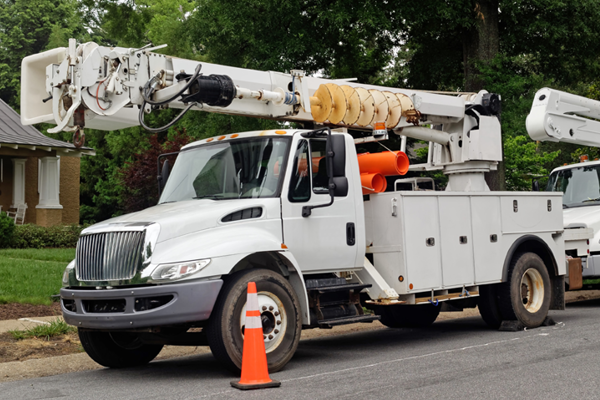It’s a challenging time to be a utility. Severe weather events are increasingly common and technology is placing more demands on your utility than ever before. At the same time, customer expectations for reliable power have never been higher.
We thought we’d share some insights on how the advanced features of our ADMS software can help you ensure a safer, more reliable power supply to your customers. Over the course of several posts, we’ll explore the upgrades and benefits of:
- FLISR (fault location, isolation, and service restoration)
- DVR (dynamic voltage regulation) and Power Factor Control
- OMS (outage management system)
- SmartVU graphical user interface
- PDS (product development system)
- Data Forwarding
Minimize the duration and impact of outages
When outages happen, your first priority is to restore power as quickly as possible to as many people as possible. But it can take hours to manually locate the problem and restore power.
FLISR is the solution.
With SurvalentONE FLISR, you can pinpoint fault locations, isolate them, and automatically reroute power to as many customers as possible in just seconds – potentially before they even notice. (Learn how Central Georgia EMC used SurvalentONE FLISR to cut its customer outage times in half.)
SurvalentONE FLISR delivers:
- More control, efficiency, and flexibility for operators
- Enhanced data and visibility to increase responsiveness and improve decision-making
- Efficiently restore service to more customers
- Increased field crew safety and productivity
Choose the optimal restoration option
When faults occur, there’s no time to waste. Operators need access to complete and accurate data to quickly detect faults and respond accordingly.
This was the driver behind the enhanced power flow study option in our load transfer analysis. Operators can simulate the effects of closing a tie once a viable backup feeder is identified and review the computed phase voltages, currents, and losses on the entire distribution network. Armed with this data, your operators can better detect system problems, including overloads and voltage violations, and more accurately assess line losses before taking action.
Minimize the number of affected customers with second pass analysis capabilities
No matter how prepared you are, outages happen and even the most understanding of customers want their power back on quickly.
With SurvalentONE FLISR’s second pass analysis option, you can minimize the number of affected customers right away. Once the first pass is completed, you can immediately perform analysis to identify additional recoverable areas based on the reconfigurations made in the first pass. The result? Your field crews can focus their efforts where they’re really needed and you can help maintain the lowest possible reliability indices.
Increased field crew safety
Field crews work under some of the most perilous conditions; accordingly, we’re always looking for ways to enhance their safety during maintenance and restoration efforts. For example, SurvalentONE supports additional hot line tags (HLT): do nothing with them, treat them like a normal tag, disable FLISR on a feeder if an HLT is applied on it, or perform FLISR operations on segments of the feeder that do not have HLT applied. As a result, crews can manually disable FLISR to whatever extent they feel necessary to complete their work safely.
Frequently Asked Questions (FAQs)
How does FLISR help utilities restore power more quickly?
FLISR automatically detects faults, isolates the affected section, and restores power to as many customers as possible within seconds. This rapid response often occurs before customers even notice an outage.
What tools help operators determine the best restoration strategy?
Operators can use power flow analysis to simulate actions like closing tie switches and review detailed network data (voltages, currents, losses) to evaluate backup feeders and select the optimal restoration strategy.
What is second pass analysis, and why is it valuable?
Second pass analysis identifies additional opportunities to reroute power after the initial restoration pass. This process helps reduce the number of affected customers even further.
How does the system ensure crew safety during outage restoration?
Hot Line Tags (HLT) can be applied to feeders under maintenance to temporarily disable FLISR, ensuring that automation does not interfere with crew safety during repairs.
What upcoming features will enhance control room capabilities?
The article mentions six modules—FLISR, DVR (Dynamic Voltage Regulation), OMS (Outage Management System), SmartVU, PDS (Product Development System), and Data Forwarding—that further improve reliability and restore greater control to operators.

